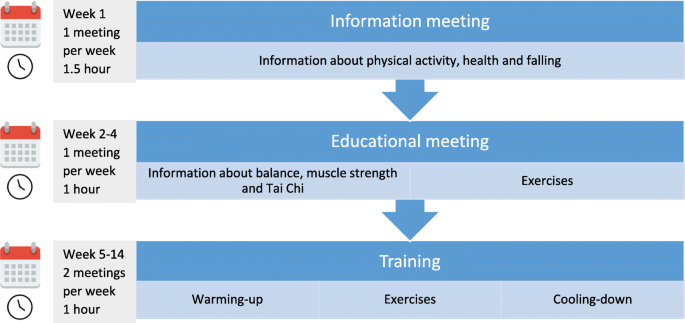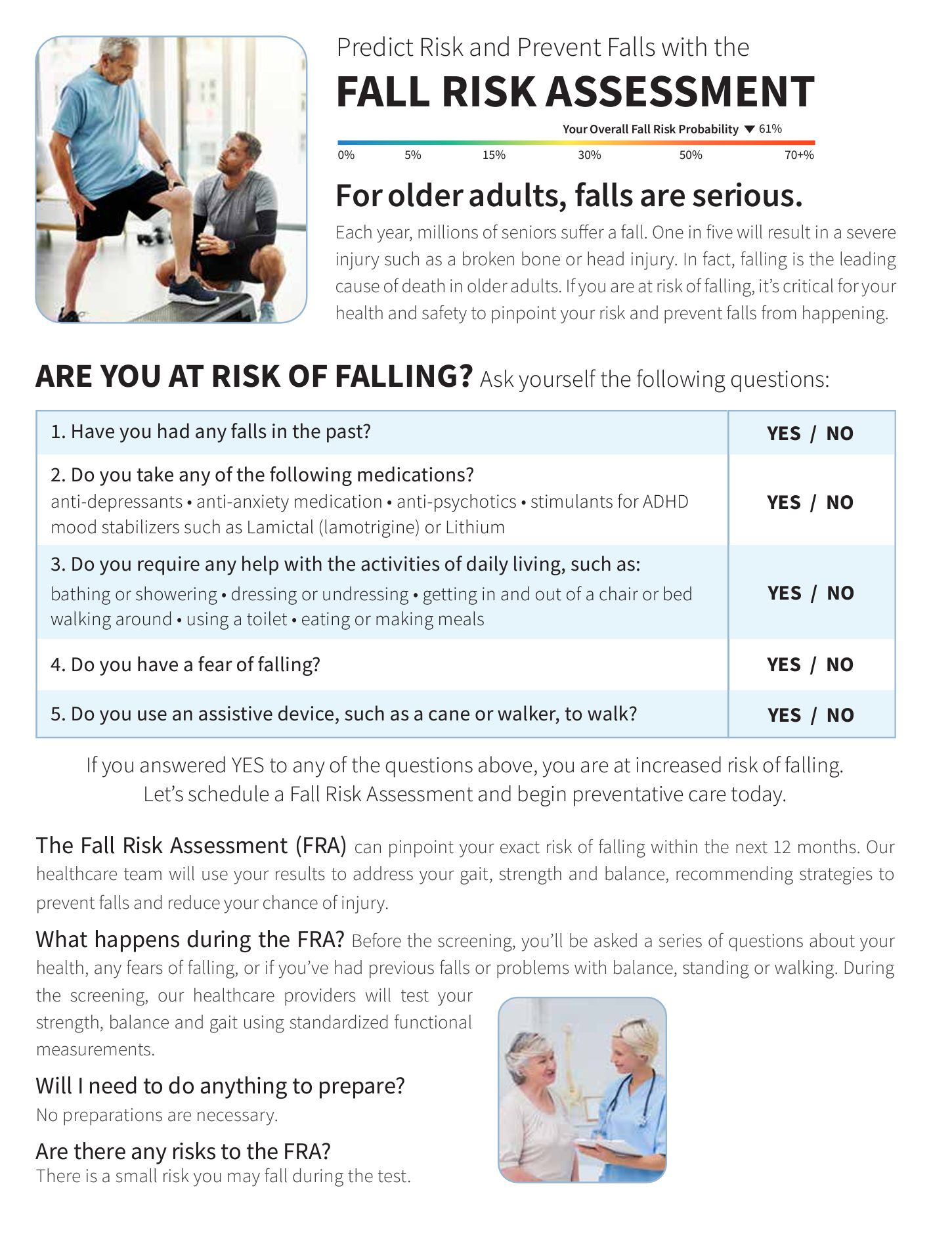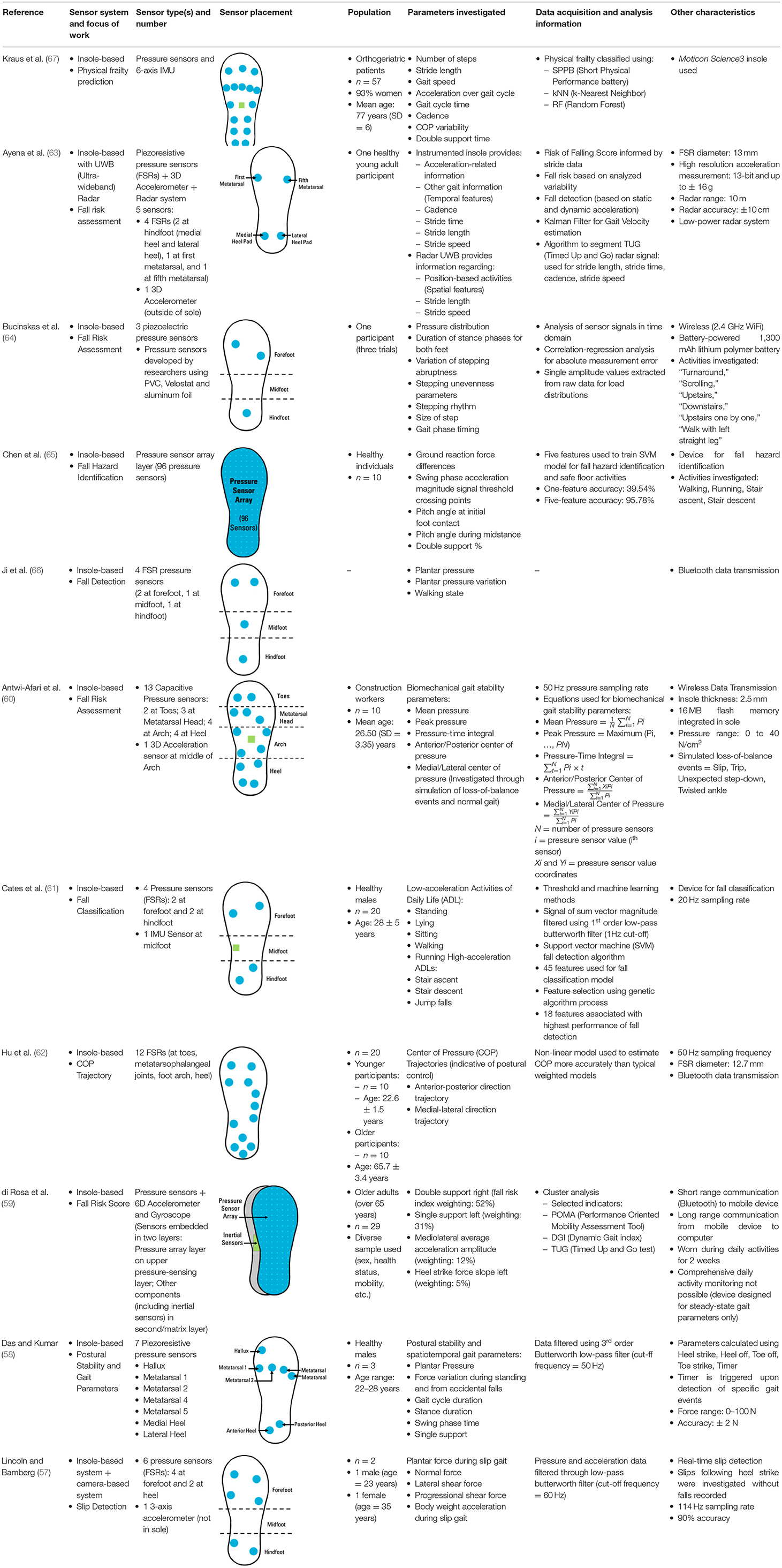The 10-Minute Rule for Dementia Fall Risk
More About Dementia Fall Risk
Table of ContentsThe Dementia Fall Risk DiariesSome Ideas on Dementia Fall Risk You Need To KnowGetting My Dementia Fall Risk To Work5 Easy Facts About Dementia Fall Risk Explained
A fall threat assessment checks to see just how most likely it is that you will certainly drop. It is mostly provided for older adults. The assessment generally includes: This includes a collection of inquiries regarding your total wellness and if you've had previous falls or issues with balance, standing, and/or walking. These devices evaluate your strength, equilibrium, and gait (the way you walk).Treatments are referrals that might lower your risk of dropping. STEADI consists of three actions: you for your risk of dropping for your threat aspects that can be improved to attempt to prevent falls (for instance, balance troubles, damaged vision) to lower your risk of falling by utilizing effective methods (for instance, offering education and learning and resources), you may be asked numerous concerns consisting of: Have you dropped in the past year? Are you fretted concerning falling?
If it takes you 12 seconds or more, it may imply you are at higher threat for a loss. This examination checks stamina and equilibrium.
The positions will get tougher as you go. Stand with your feet side-by-side. Move one foot midway ahead, so the instep is touching the large toe of your other foot. Move one foot totally before the various other, so the toes are touching the heel of your other foot.
A Biased View of Dementia Fall Risk
The majority of drops happen as an outcome of numerous adding elements; consequently, taking care of the risk of dropping starts with identifying the aspects that contribute to drop danger - Dementia Fall Risk. A few of the most pertinent risk variables include: History of previous fallsChronic clinical conditionsAcute illnessImpaired gait and equilibrium, lower extremity weaknessCognitive impairmentChanges in visionCertain high-risk medicines and polypharmacyEnvironmental aspects can likewise boost the threat for drops, including: Insufficient lightingUneven or harmed flooringWet or slippery floorsMissing or harmed handrails and get barsDamaged or incorrectly equipped equipment, such as beds, mobility devices, or walkersImproper use assistive devicesInadequate supervision of the people living in the NF, including those who display hostile behaviorsA effective fall risk management program requires an extensive clinical analysis, with input from all participants of the interdisciplinary group

The treatment strategy ought to additionally include treatments that are system-based, such as those that promote a safe atmosphere (appropriate illumination, hand rails, get hold of bars, etc). The performance of the interventions must be evaluated periodically, and the care strategy revised as essential to show modifications in the autumn danger evaluation. Executing a loss threat administration system utilizing evidence-based best technique can reduce the occurrence of falls in the NF, while restricting the capacity for fall-related injuries.
Excitement About Dementia Fall Risk
The AGS/BGS standard suggests evaluating all adults matured 65 years and older for autumn risk yearly. This screening contains asking people whether they have actually dropped 2 or even more times in the past year or sought clinical interest for a loss, or, if they have actually not dropped, whether they feel unsteady when strolling.
People that have actually dropped once without injury should have their equilibrium and stride assessed; those with stride or equilibrium problems must receive added assessment. A history of 1 autumn without injury and without stride or equilibrium problems does not warrant further analysis past continued annual loss risk screening. Dementia Fall Risk. A loss danger evaluation is needed as part of the Welcome to Medicare examination

About Dementia Fall Risk
Documenting a drops history is one of the top quality home indications for fall prevention and management. An essential component of danger analysis is a medication testimonial. Several courses of medicines enhance loss danger (Table 2). Psychoactive medications specifically are independent forecasters of drops. These medicines tend to be sedating, modify the sensorium, and harm equilibrium and gait.
Postural hypotension can typically be eased by lowering the dosage of blood pressurelowering medications and/or quiting medicines that have orthostatic hypotension as an adverse effects. Use above-the-knee support tube and copulating the head of the bed elevated might view it additionally lower postural reductions in high blood pressure. The suggested elements of a fall-focused physical assessment are revealed in Box 1.

A Pull time higher than or equivalent to 12 secs suggests high fall danger. Being not able to stand up from a chair of knee elevation without making use of one's arms suggests boosted loss danger.